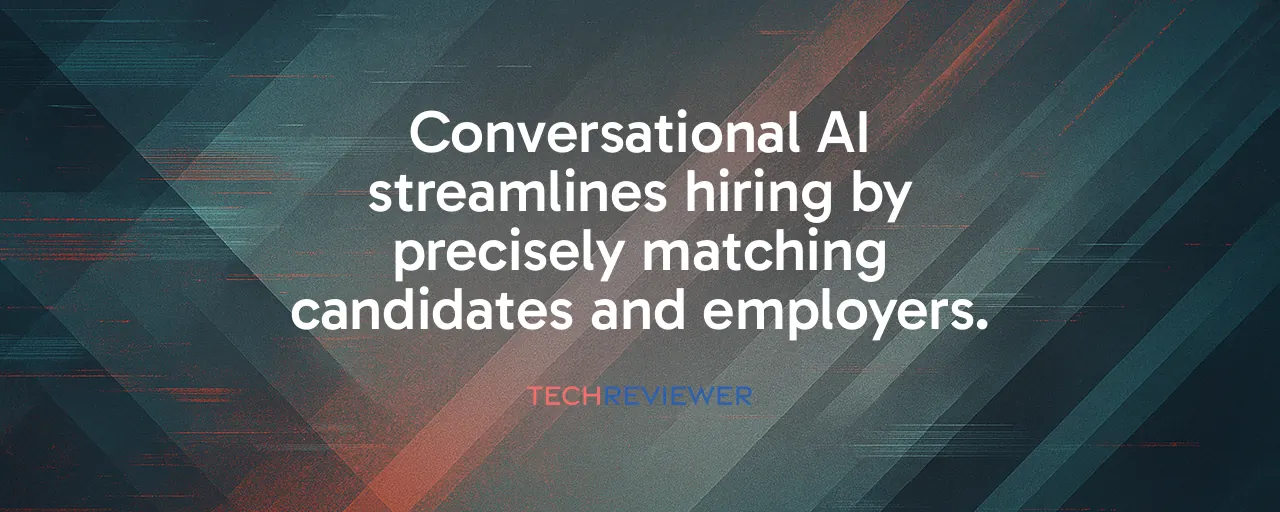Escaping the Application Avalanche
Job hunting today feels like shouting into a void. Platforms like LinkedIn get flooded with 1,000 applications in just six hours for a single posting, according to entrepreneur Matt Wilson. Many companies, swamped by this deluge, don't even glance at most resumes. On the flip side, job seekers face endless duplicate listings, ghosted applications, and the growing threat of competing against AI-generated fake applicants. It's a mess for everyone involved.
Enter conversational AI, a fresh approach to untangle this chaos. Startups like Jack and Jill, a London-based platform with 49,000 users, are using AI agents to rethink recruitment from the ground up. Instead of drowning in applications, these tools aim to match candidates and employers with precision, cutting through the noise that is plagued job boards for years.
How AI Agents Like Jack and Jill Work
Jack and Jill, launched in 2025 with $20 million in seed funding from Creandum, splits its AI into two roles. Jack handles job seekers, guiding them through a 20-minute conversational interview to build a detailed profile. It digs into skills, career goals, and workplace preferences, then scours job databases to suggest tailored roles. It even offers mock interviews and coaching to prep candidates. Jill, meanwhile, works with employers, analyzing job needs and screening applicants to elevate the best fits.
Unlike traditional job boards, these agents don't just match keywords. They use advanced language models to understand nuances, like what a candidate values in a workplace or what a company needs beyond a resume. For example, clients like Airtable and TrueLayer rely on Jill to sift through applicants efficiently. The platform charges employers a 10 percent commission on a hire's base salary, while job seekers use it for free, making it accessible and aligned with successful placements.
Case Study: Jack and Jill vs. Paradox's Olivia
To see how conversational AI stacks up, compare Jack and Jill to Paradox's Olivia, another AI recruitment tool. Olivia, used by companies like McDonald's and Unilever, focuses on high-volume hiring in retail and hospitality. It automates scheduling and basic screening, slashing hiring times from 12 days to 4 days for one retailer, according to academic research. Its strength lies in handling repetitive tasks for hourly roles, freeing up recruiters for strategic work.
Jack and Jill, however, casts a wider net. Its dual-agent system serves mid-market firms and professionals, not just high-volume employers. While Olivia excels in speed, Jack and Jill emphasizes nuanced matching, using conversational insights to align candidates with roles that fit their aspirations. The lesson? Olivia streamlines volume; Jack and Jill prioritizes precision, showing AI's versatility in addressing different hiring needs.
Balancing Efficiency With Fairness
Conversational AI offers clear wins: 85 percent of candidates complete applications when engaged by AI chatbots, compared to 50 percent with traditional forms, studies show. Job seekers get instant responses instead of waiting weeks, and employers like Airwallex cut through application clutter. But there's a catch. Research highlights AI's risk of bias, like favoring certain demographics over others, even with identical qualifications. For instance, some models disadvantage Black male applicants, raising red flags for fairness.
Jack and Jill tackles this by focusing on linguistic cues over visual or tonal analysis, reducing bias risks. Still, no system is perfect. Regulations, like New York City's Local Law 144, mandate annual bias audits for AI hiring tools, pushing platforms to prioritize fairness. Candidates also worry about losing the human touch in hiring, fearing algorithms miss intangibles like creativity. Balancing efficiency with equity remains a tightrope walk for AI-driven recruitment.
What's Next for AI in Hiring
The recruitment tech market, valued at $660 million in 2025, is set to hit $1.1 billion by 2033, driven by AI adoption. Platforms like Jack and Jill signal a shift from passive job boards to proactive, agent-driven matching. Yet challenges linger. Some candidates game AI systems with optimized responses, while others lack the digital access to engage fully, risking a widened divide. Employers face integration hurdles with legacy systems, and regulators demand transparency in how AI makes decisions.
Despite these hurdles, the potential is huge. AI could cut unemployment duration by better matching talent to opportunities, though long-term studies on job fit and satisfaction are still needed. For now, tools like Jack and Jill show that smarter, fairer hiring is possible, turning a chaotic process into one that works for candidates and companies alike.
